|
I feel extraordinarily creative. Yesterday's drawing surprised me with its insight and invention. There is opening deep within me. I am grandly inquisitive. The answers spilling from me are possibilities, one innovative answer after another. I do not fear challenge or risk. I am in the goodness of being human, of living.
Part IV: Flat on Flat versus 3D on FlatI prefer to deal with the artifice of the third-dimension on a flat surface, on canvas or paper. This is obvious in my images; obvious in the two works I show from yesterday's studio session. Henri Matisse constantly dealt with this problem. Many have said Matisse's art is mostly decorative. It is more than that. Matisse himself said this: "What I dream of is an art of balance, of purity and serenity, devoid of troubling or disturbing subject matter, an art which could be for every mental worker, for the businessman as well as the man of letters, for example, a soothing, calming influence on the mind, something like a good armchair which provides relaxation from physical fatigue." That sounds like decoration to me! Matisse also said this: "Expression, to my way of thinking, does not consist of the passion mirrored upon a human face or betrayed by a violent gesture. The whole arrangement of my picture is expressive. The place occupied by figures or objects, the empty spaces around them, the proportions – everything plays a part. Composition is the art of arranging in a decorative manner the various elements at the painter’s disposal for the expression of his feelings." I agree with the second quote from Matisse more than the first. Expression is my desire too. However, I do not believe this (from Matisse): "Composition is the art of arranging in a decorative manner...." It is far more difficult that that. Expression is far more than decoration. It can be tough and caustic, clean or messy. I continue to research this problem. Let me show two works of Henri Matisse. One tough, filled with three-dimension references, the other absolutely decorative, absolutely flat on flat (see below). I have tried to prove my thesis, that the artifice of the third-dimension can produce superior, more expressive art. than flat on flat. These two works by Henri Matisse are undeniably terrific and expressive. Of the two, I prefer the former. They are both decorative, but they are both bold and expressive as well. Kudos to Henri Matisse! I will continue to research self-expression through the use of three-dimensional forms on a flat canvas. I intuitively feel this method will bring me far past the expressive limitations of flat on flat. I must say is, "I am not Henri Matisse!" I admire Matisse's art, but I admire myself more. Part III: Wall with Objects OR WallpaperPaintings and drawings are flat, two-dimensional surfaces. If an artifice of the third dimension is created there are two choices. In order to deal with the inherent two-dimensionality of canvas or paper an artist can... (1) create a box, or landscape, by using a ground defined by a horizon, or (2) hang forms from a flat wall (the wall being defined by obvious positioning of the forms on the wall). There is third way to deal with two-dimensional canvas or paper: Float flat objects in an amorphous space. This third option, flat on flat, is always unsatisfactory. It is decoration. It is merely wallpaper. It cannot be art! Decoration is nice and pleasant, it may fill a void on a wall, but it cannot speak deeply of the human spirit, complex as the human spirit is, with intellect and emotion. Joan Miró tried doing both; he made paintings with the artifice of the third-dimension, and he made paintings that have flat objects on amorphous backgrounds. Miró's paintings with the third dimensional deceit mostly succeed, Miró's flat on flat paintings mostly fail (they are decorative and may fit well as decorations in a home, nothing more). Below, look at two paintings by Joan Miró. I admit, the second painting, which is flat on flat, exhibits Miró's effort to define the ground by using uneven areas of paint (in this way a viewer, at least, is cognizant the painting is on a flat surface). Henri Matisse did both. He created flat on flat works (e.g., his late paper cuts), but most of his career was spent making drawings and paintings with an exuberant questioning of color and three-dimensional space. I will discuss Matisse's work tomorrow. In yesterday's drawing I experimented with the lack of a horizon line; however there is an obvious horizon and an obvious ground. There is an end to everything. This applies to a painting as well. One can make paintings as walls. One can make paintings as landscapes. One can make paintings that inhabit a room. In ALL cases, there is a ground. The ground is the viewer's agency to find his bearing. An early influence upon my art was Yves Tanguy (1900-1955). Before I began today's post, I thought to myself, "Hey, Tanguy made images without horizons!" NOT true! Yves Tanguy ended his career making surrealistic LANDSCAPES! Tanguy began his artistic career, like all of us, making figurative paintings (see below). In ALL cases, despite my early morning intellectualized doubt, there is a definitive ground in Tanguy's paintings, always! There are horizon lines even when Tanguy creates an amorous background fog; there it is, in every work, a back-ground! And so it goes! Another early influence on my art was Arshile Gorky (1904-1948). The same grounding occurs in Gorky's works (see below). These has to be a defined rear-end to a painting, which I shall henceforth call, "the ground". Without the ground the viewer is left with insecurity of place. It is the relationship to security that makes a painting free, open, and emotive, thus allowing unrestrained creativity. Without security there is only loss; loss means absence, absence means a lie, a lie means dishonesty. The last thing I want my art to be is dishonest! I began yesterday's drawing looking to test the "no horizon" idea. I cannot do it! A ground allows the artist to create havoc or security or insecurity or whatever. Life and art have irrefutable definitions. One of them is this: we exist in a place and in time; i.e., we exist on something that can be called our ground. Art mimics life. That is impossible to deny! 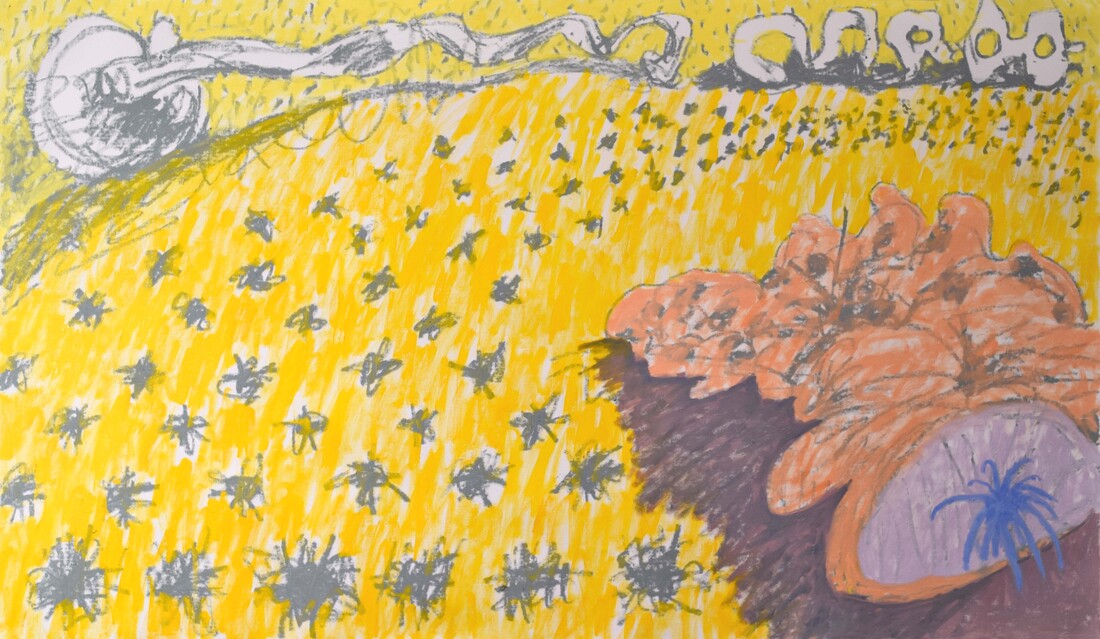 "Sentence" (2019 No.4, state 2), oil on canvas, 36x61.5 inches {"And you’d spend years trying to decipher the sentence, until finally you’d understand it. But after a while you’d realize you got it wrong, and the sentence meant something else entirely." - Tadeusz Dąbrowski, from the poem "Sentence"} Today's entry is partially a tale of two visitors. Two artists visited my studio; an illuminating conversation ensued. One artist questioned my use of a horizon line. For the last few years I have consistently used the horizon line to place a definitive ground in my drawings and my paintings; therefore allowing the viewer to think, "Landscape!" This question, "Horizon or not?", began a fascinating discussion amongst us three. I have no sound judgement. I don't know. I do know I dealt with this same problem around 1990 (after this text I show two works from that period). The first of these older paintings was reviewed by as art critic; he questioned my lack of establishing a touchable ground. The second painting is my reaction to that relevant criticism. I have not found an answer that gives me security. And thus it goes... Yesterday's work is shown above. Both the drawing and the painting have an obvious horizon line. Finally, at the bottom of this post I show a work by Anselm Kiefer, widely respected as one of the most important painters of our generation. Kiefer is, even in his most abstract works, landscape relentless. The painting "Doublethink" is living up to its name. Its process is me thinking twice. It is straightforward problem solving (though an outsider may believe it being solved in a roundabout way). I am pushing up against current knowledge; In order to solve this I must make new knowledge. This is exhilaration! It's a wonderful life!
Mysterious are the travels that reveal. Always new, always old; both! I drag ideas from the past, I disclose ideas in the present. Yesterday's drawing summarizes, questions, solidifies, and declares. It is a restrained revelation. I do not know its entire meaning. This is me in the act of self-discovery. I am making my oeuvre. This drawing feels important, like reading a poem that makes total sense because it elegantly discloses archetypal ideas. This is visually prototypical, peculiar to me.
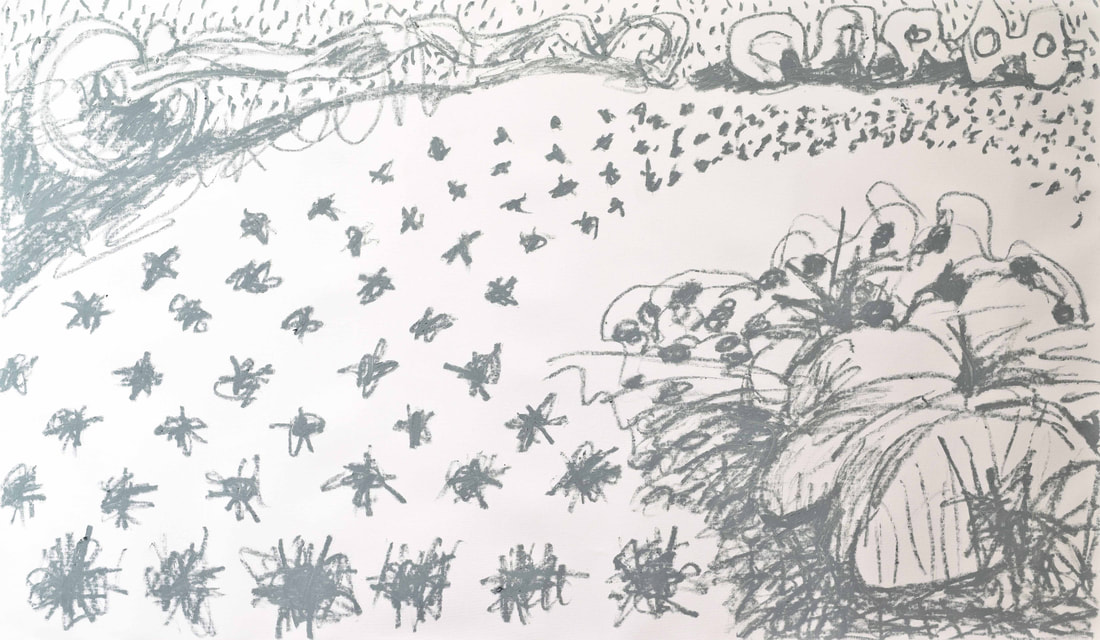 "Sentence" (2019 No.4, state 01), oil on canvas, 36x61.5 inches {"And you’d spend years trying to decipher the sentence, until finally you’d understand it. But after a while you’d realize you got it wrong, and the sentence meant something else entirely." - Tadeusz Dąbrowski, from the poem "Sentence"} Yesterday felt almost normal. I was in the studio; I made art! I had more ideas than I could make real. Thus came a new painting, "Sentence". "Sentence" is named after the splendid poem by Tadeusz Dąbrowski, published in this week's The New Yorker magazine (July 22, 2019 Issue). Yesterday's drawing was new and different and excellent too! Sentence My work does not come easy; never feels immediately right and good. I'm always troubled; always wondering about the means to better success. Best is my being there, doing this, living the questioned life.
I failed yesterday if simplicity be my goal. It is not! I want the intellectual and emotional satisfaction of complex images and the direct and immediate engagement of simplicity. Ellsworth Kelly achieved great visual impact using simple images. Kelly's work satisfies emotionally and intellectually. His is a great achievement. As much as I envy Kelly's direct route to completely fulfilling art, I am not Ellsworth Kelly; I am myself. My path continues to be discovered, step by currently unknown next step. Yesterday's drawing was such a step. It taught me; I reflect upon it. I want the negative space in my art to be as effective as Ellsworth Kelly was able to achieve in his art. |
To read my profile go to MEHRBACH.com.
At MEHRBACH.com you may view many of my paintings and drawings, past and present, and see details about my life and work. Archives
April 2024
|
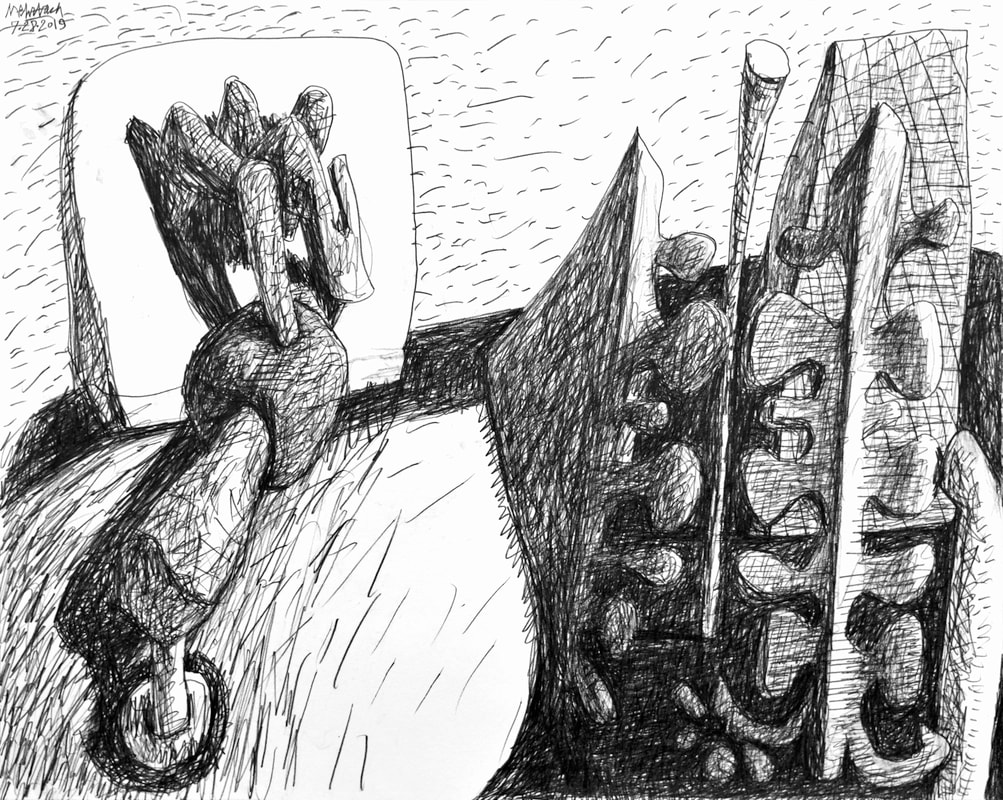
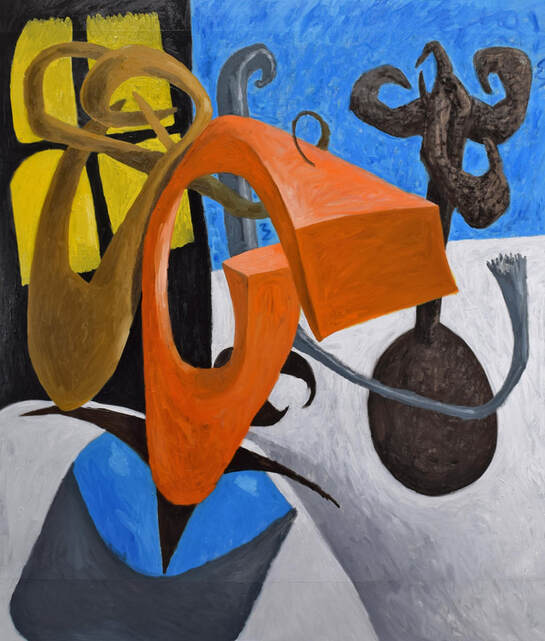
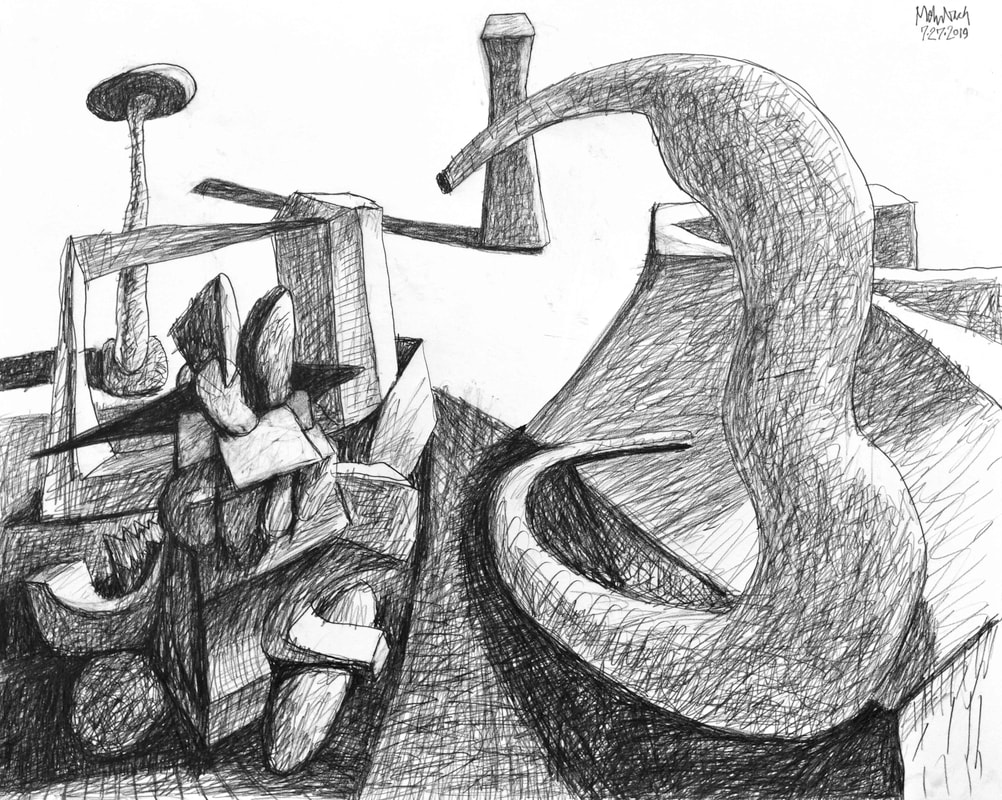
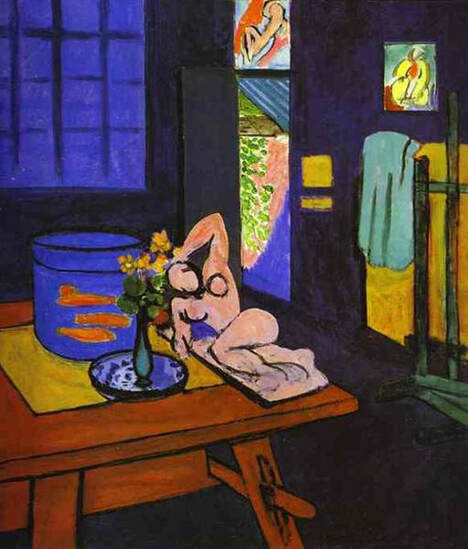
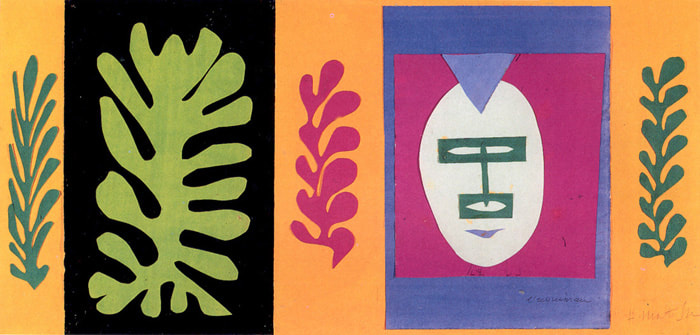
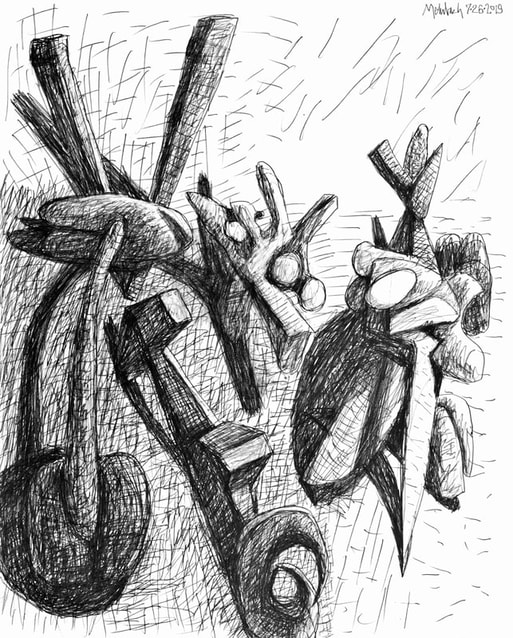
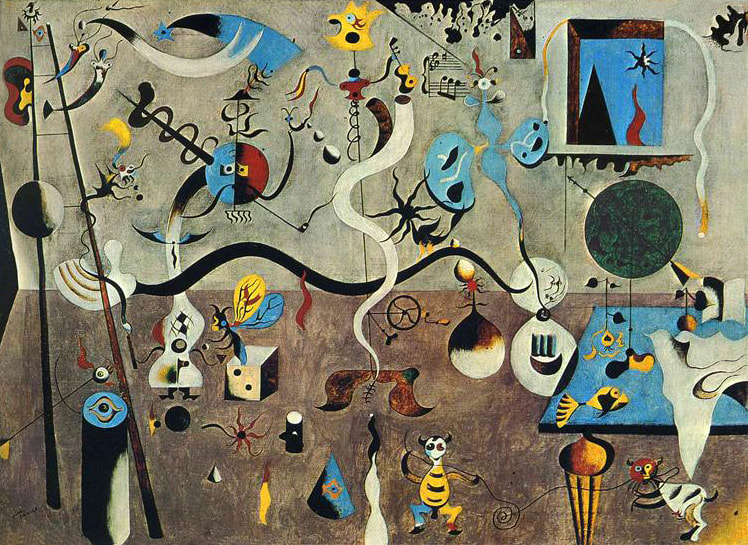
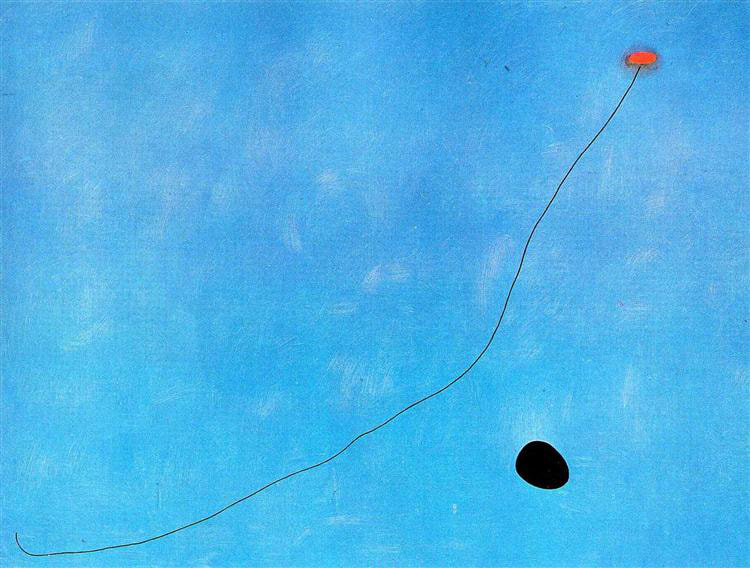
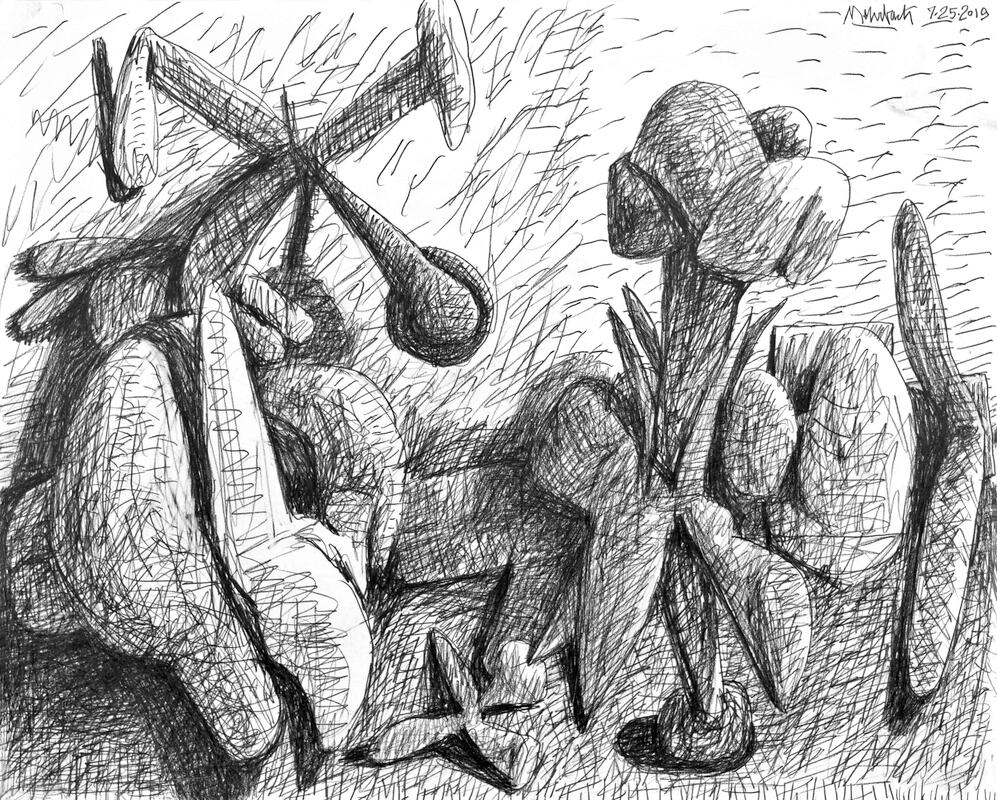
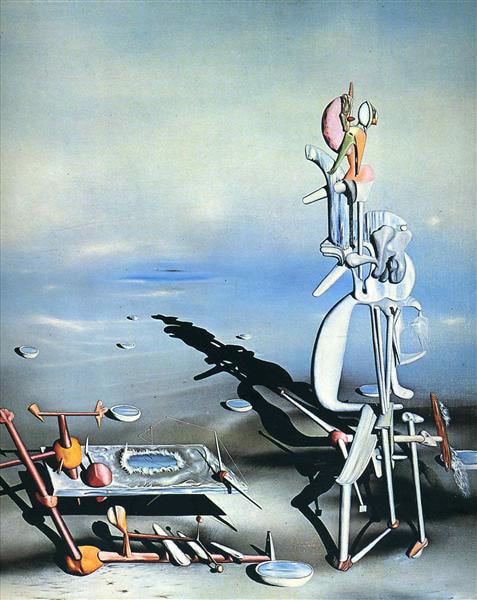
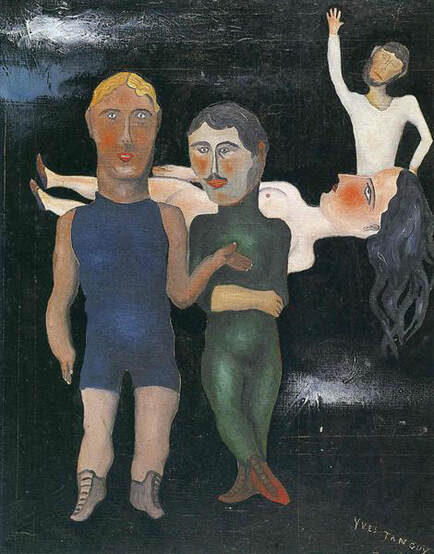
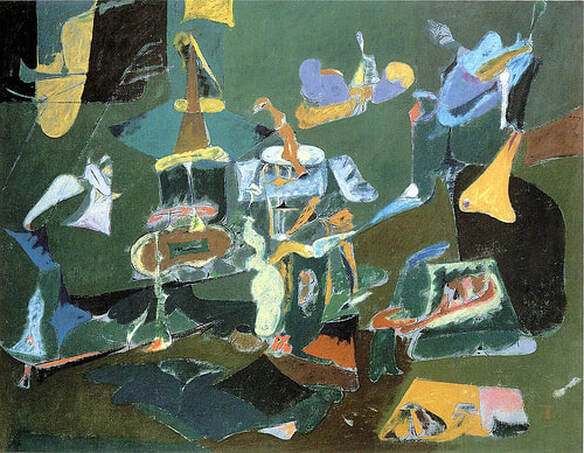
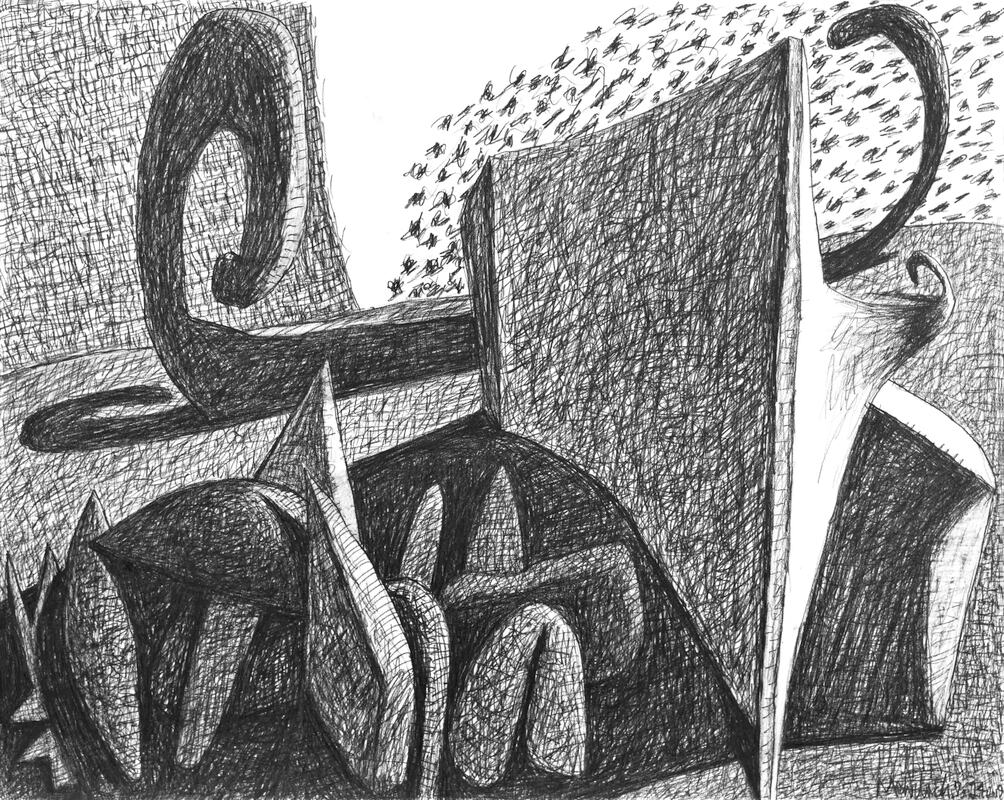
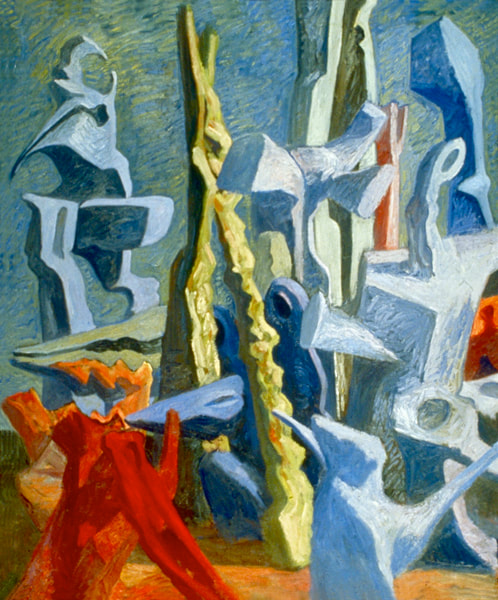
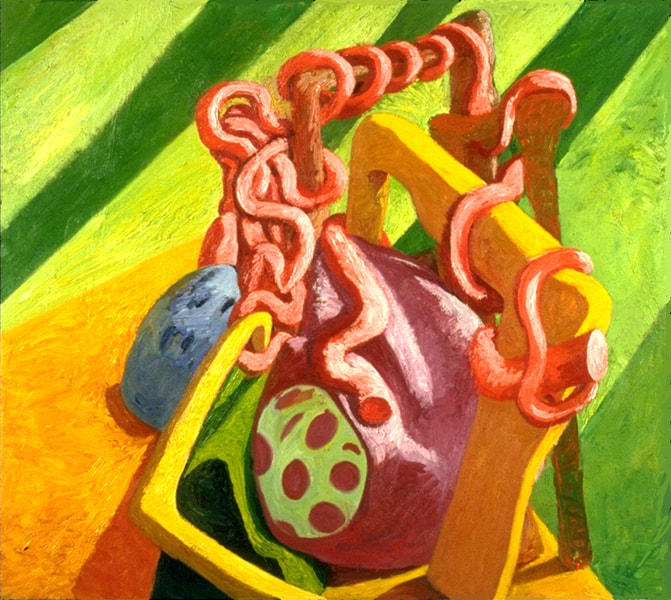

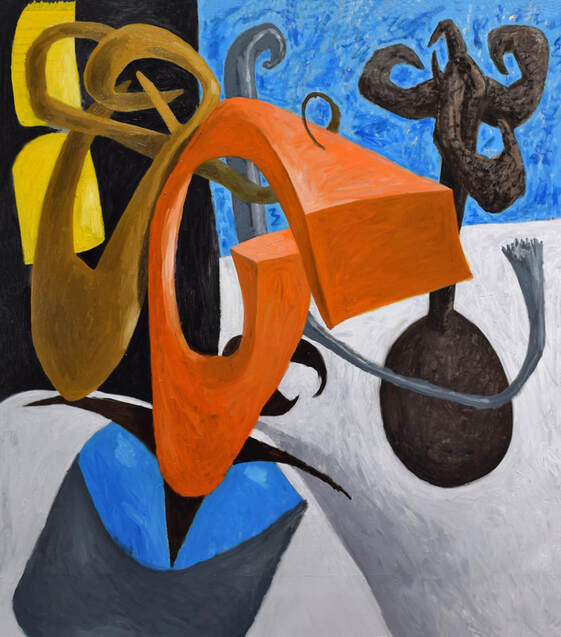
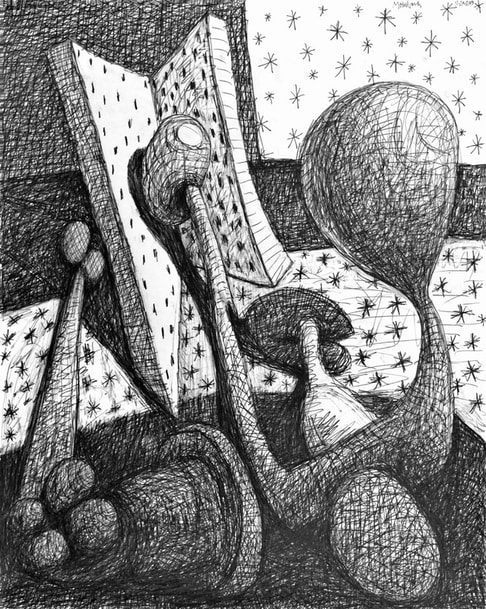
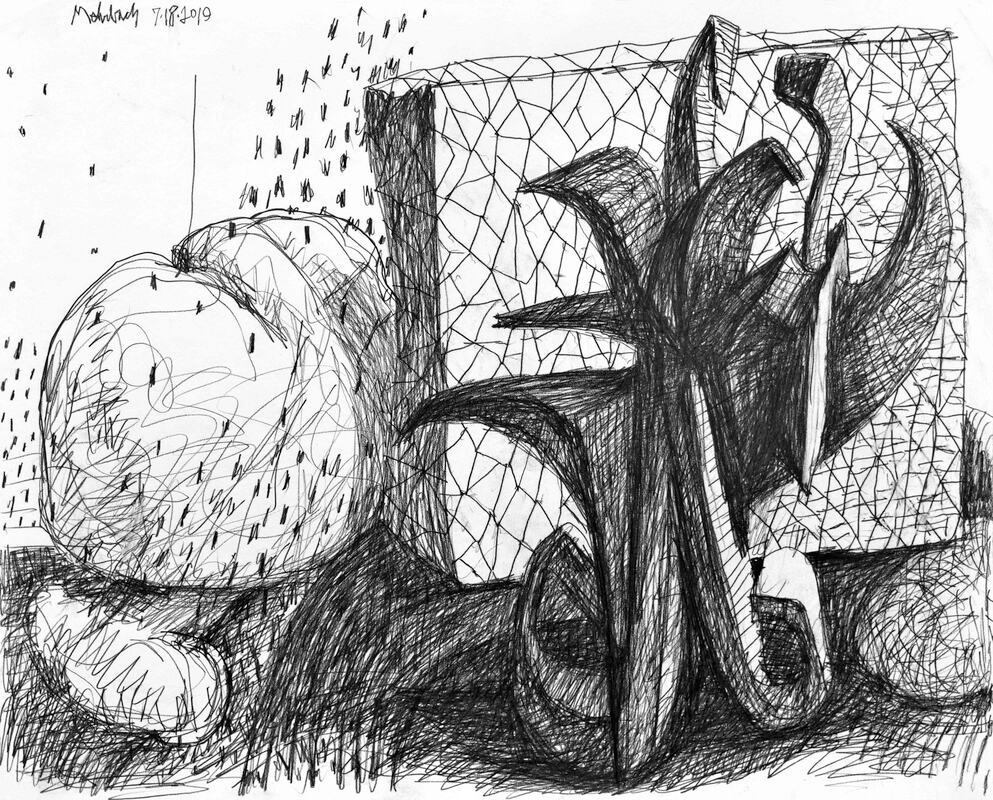
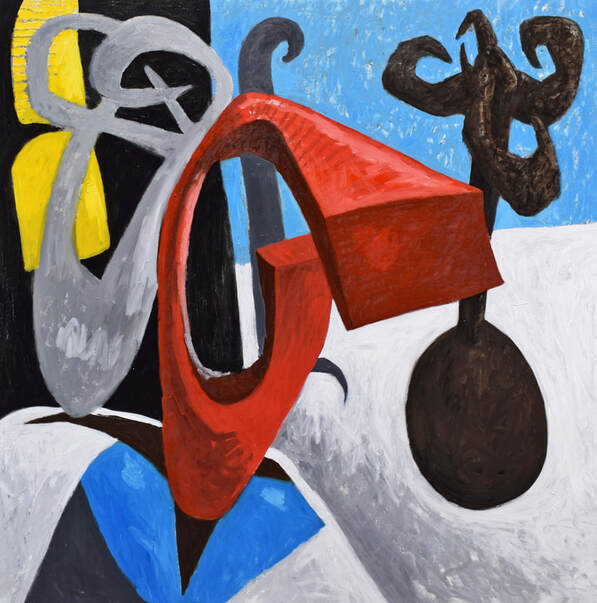
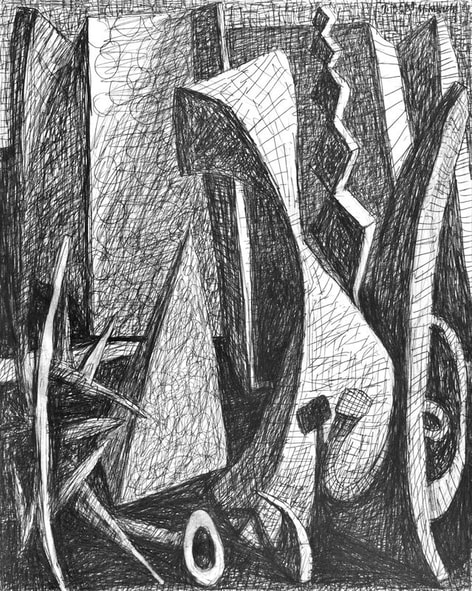
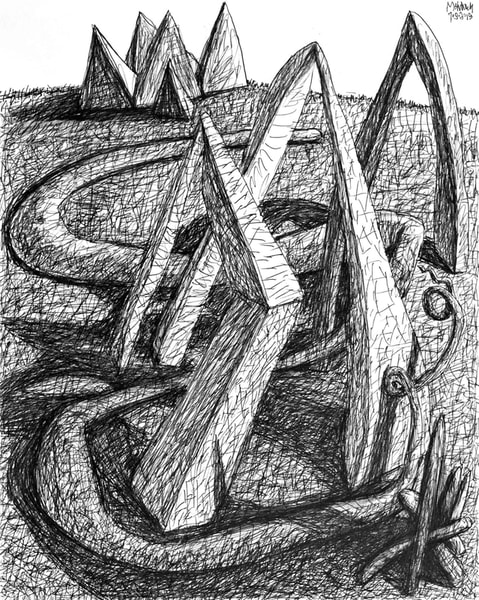
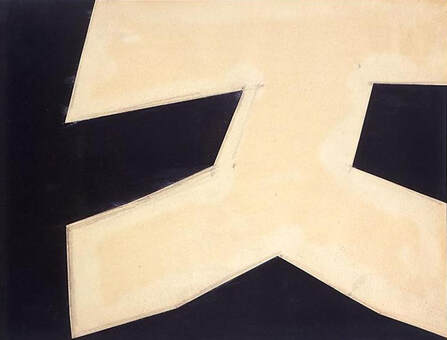
 RSS Feed
RSS Feed